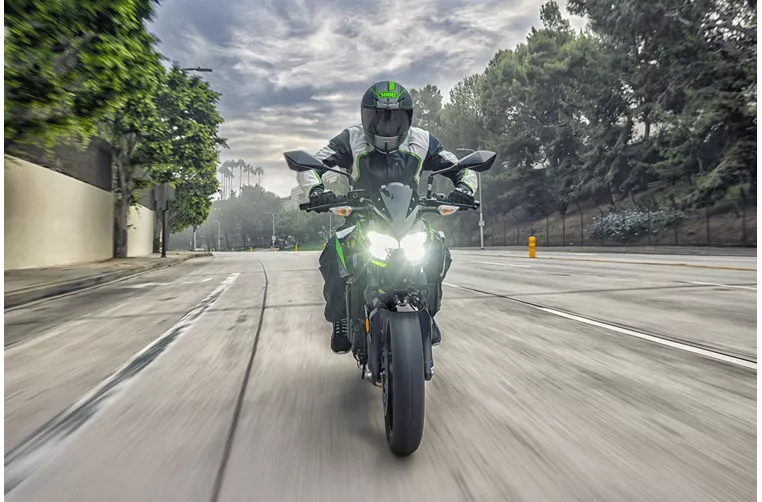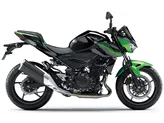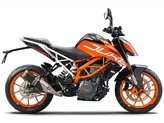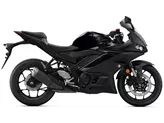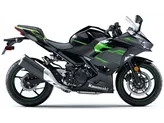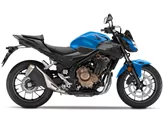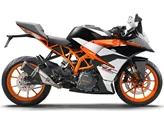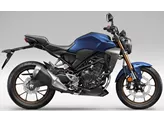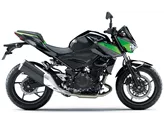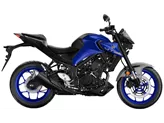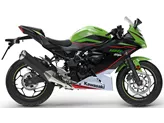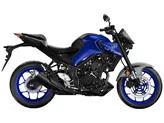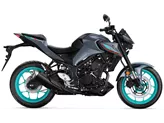Kawasaki Ninja 400 2018 vs. Kawasaki Z 400 2023

Kawasaki Ninja 400 2018
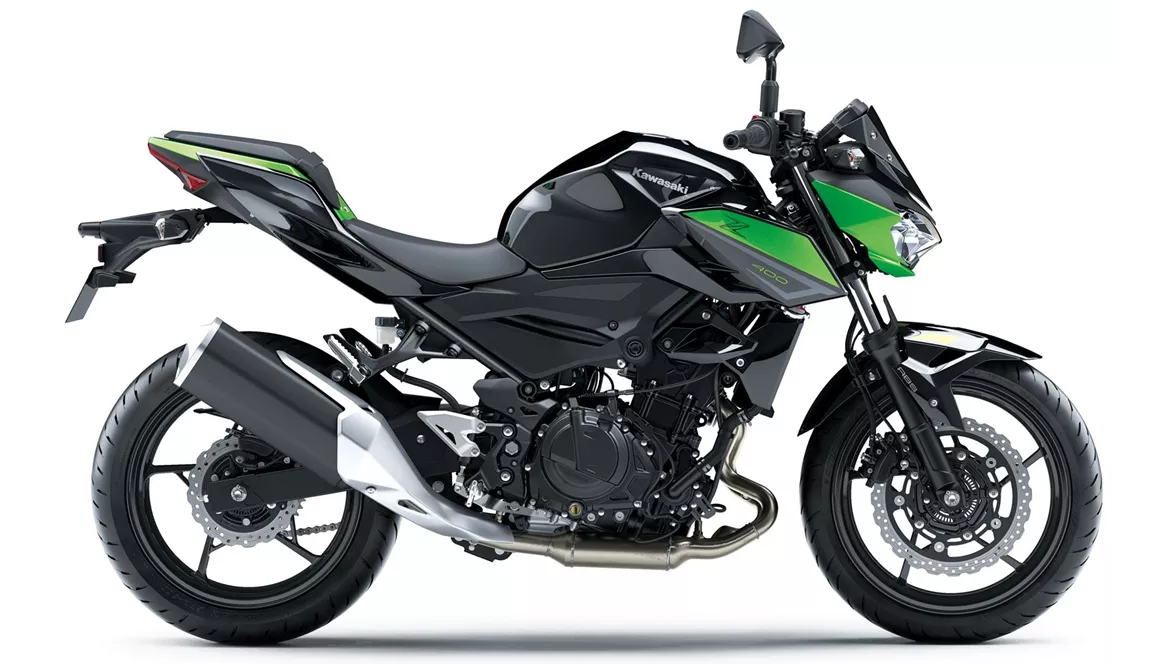
Kawasaki Z 400 2023
Overview - Kawasaki Ninja 400 2018 vs Kawasaki Z 400 2023
In terms of technical specifications, both the Kawasaki Ninja 400 2018 and the Kawasaki Z 400 2023 have similar engine types, bore, stroke, engine power, torque, compression ratio, fuel system, throttle bore, cylinders, valves per cylinder, cooling system, and displacement. They both feature a liquid-cooled, inline 2-cylinder engine with a displacement of 399cc, producing 45 horsepower and 37-38 Nm of torque.
In terms of suspension, both models feature a telescopic fork front suspension with a diameter of 41mm and a swing arm rear suspension with a monoshock absorber and preload adjustment.
The chassis of both models is made of steel and has a tubular frame design. The rake and trail measurements differ slightly, with the Ninja 400 having a rake of 63 degrees and a trail of 93mm, while the Z 400 has a rake of 65.5 degrees and a trail of 92mm.

Kawasaki Ninja 400 2018
Both models are equipped with a single disc front brake with a diameter of 310mm and double piston calipers. They also feature ABS as part of their advanced rider assistance systems.
In terms of dimensions and weights, both models have the same front and rear tire widths and diameters (110mm and 150mm, 17 inches respectively). They also have the same wheelbase of 1370mm and seat height of 785mm. The kerb weight of the Ninja 400 with ABS is slightly higher at 168kg compared to the Z 400's 167kg. Both models have a fuel tank capacity of 14 liters.
Moving on to the strengths of each model, the Kawasaki Ninja 400 2018 is praised for its chassis that is suitable for sporty use, low weight, and effortless handling. The engine is also known for its smooth response, and the seating position is relaxed and confidence-enhancing. Additionally, the Ninja 400 features LED headlights, which provide improved visibility.
On the other hand, the Kawasaki Z 400 2023 is praised for its lively engine, good chassis, and brakes, as well as its easy handling. The Z 400 also has a grown-up look and high-quality workmanship.
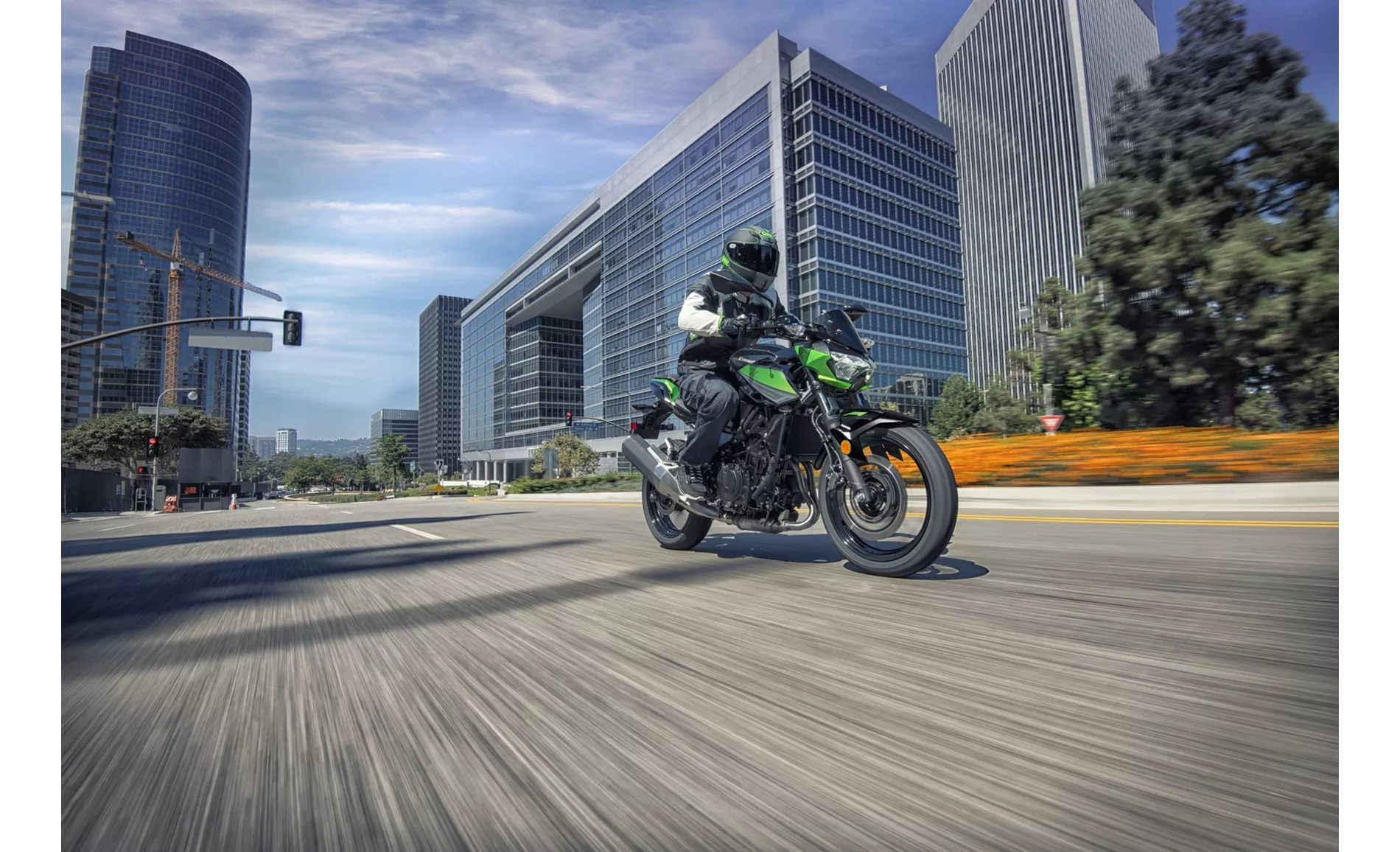
Kawasaki Z 400 2023
In terms of weaknesses, the Ninja 400 2018 is noted for its non-adjustable brake and clutch levers. Additionally, riders over 180cm tall may experience enormously loud wind noise with the original windshield.
Similarly, the Z 400 2023 also has non-adjustable levers, which could be seen as a weakness.
In summary, both the Kawasaki Ninja 400 2018 and the Kawasaki Z 400 2023 have similar technical specifications, with slight differences in the chassis geometry. The Ninja 400 is praised for its sporty chassis, low weight, and smooth engine response, while the Z 400 is known for its lively engine, good chassis and brakes, and high-quality workmanship. Both models have non-adjustable levers as a common weakness.
Technical Specifications Kawasaki Ninja 400 2018 compared to Kawasaki Z 400 2023
Pros and Cons in comparison
Pros and Cons in comparison
Kawasaki Ninja 400 2018

In summary, the Ninja 400 could be described as the perfect entry into the supersport world. You can't get more power with A2, the looks suggest much more power, the vehicle is playful to ride, is forgiving in every respect and still allows a really sporty riding style. Those who had legitimate concerns about the lack of power on the various 250 cubic machines now have no more excuses. Ninja 400, it's good to have you!
Kawasaki Z 400 2023
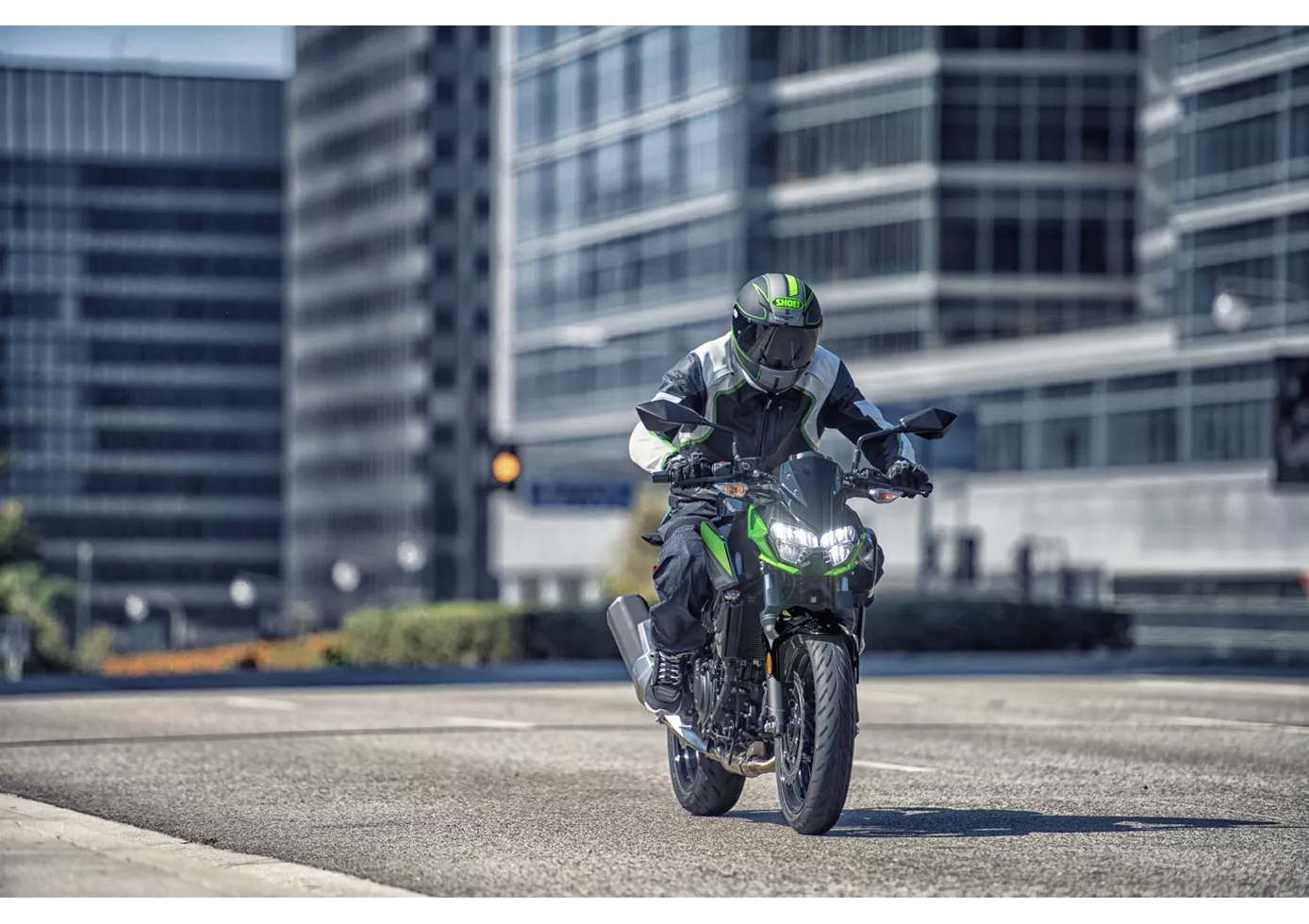
A cool and sensible entry into the A2 class. The Kawasaki Z400 scores points all along the line with its instinctive handling and the in-line two-cylinder, which convinces with good response and sufficient power. You can't go wrong with this naked bike and you can overlook the fact that the levers are not adjustable - after all, costs have to be saved somewhere.
Price Comparison Avarage Market Price Kawasaki Ninja 400 vs Kawasaki Z 400
There are a few key differences between a Kawasaki Ninja 400 2018 and a Kawasaki Z 400 2023. In terms of price, the actual average prices of both motorbikes are almost the same. Compared to Kawasaki Z 400 2023 there are less Kawasaki Ninja 400 2018 bikes available on the 1000PS.de Marketplace, specifically 10 compared to 89. It takes less time to sell a Kawasaki Ninja 400 with 105 days compared to 123 days for a Kawasaki Z 400. Since model year 2018 1000PS.de editors have written 9 reviews for the Kawasaki Ninja 400 and 8 reviews for the Kawasaki Z 400 since model year 2019. The first review for the Kawasaki Ninja 400 was published on 11/22/2017 and now has more than 44,300 views. This compares to more than 23,200 views for the first review on Kawasaki Z 400 published on 10/2/2018.

